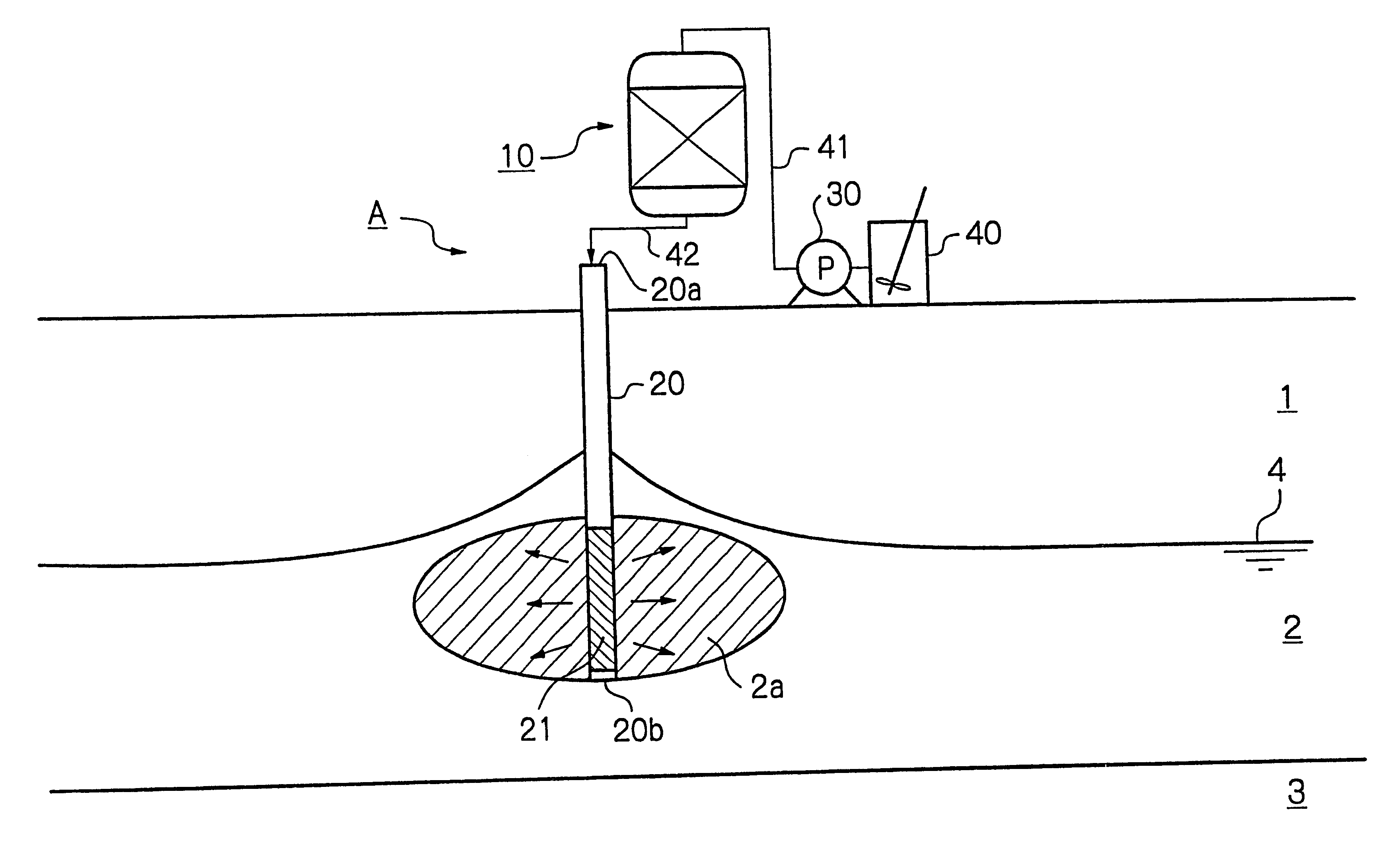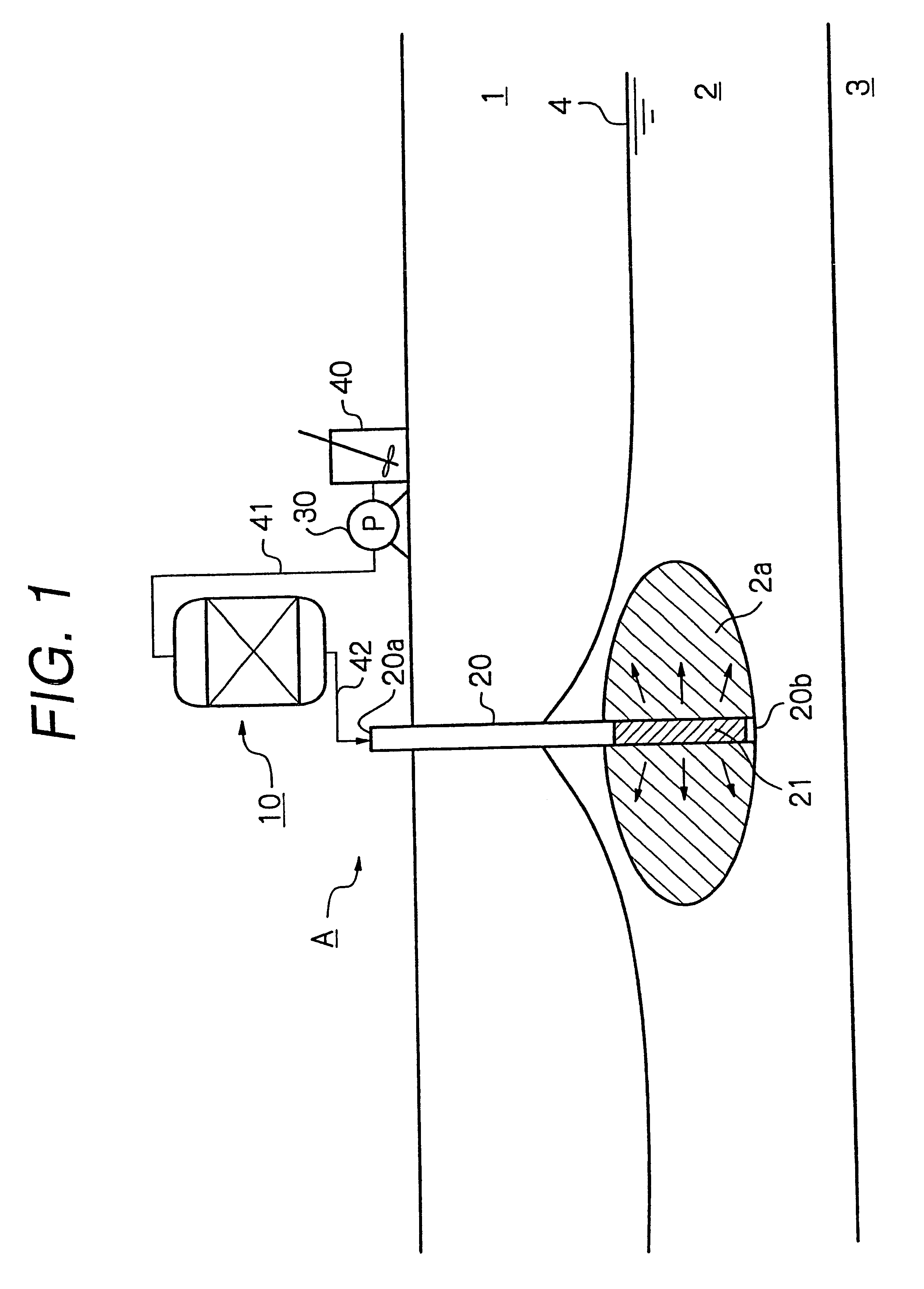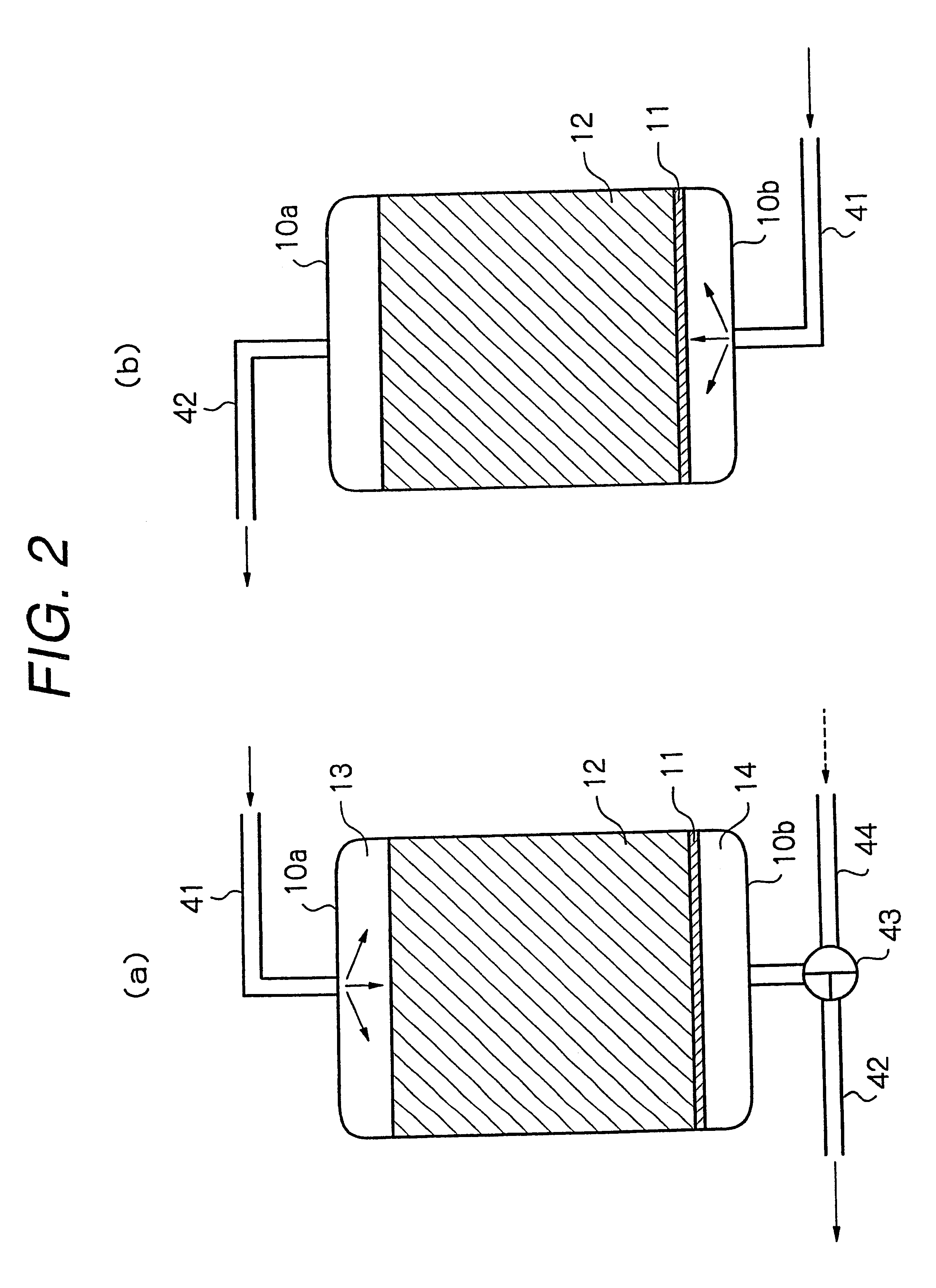Method and apparatus for purifying polluted substances containing halogenated organic compound
a technology of halogenated organic compounds and purification methods, which is applied in the direction of water cleaning, biological water/sewage treatment, contaminated groundwater/leachate treatment, etc., can solve the problems of hepatic damage, long treatment time, and inability to easily degrade halogenated organic compounds in the natural world
- Summary
- Abstract
- Description
- Claims
- Application Information
AI Technical Summary
Benefits of technology
Problems solved by technology
Method used
Image
Examples
second embodiment
Next, the purification apparatus of the present invention is shown in FIG. 3. FIG. 3 is a schematic view showing a state of installation of the purification apparatus using a water soluble reducing agent as the reducing agent. As the water soluble reducing agent, there can be preferably used an organic acid or its derivative, hypophosphorous acid or its derivative, or a salt of an organic acid or hypophosphorous acid with iron, titanium, zinc, manganese, aluminum or magnesium, or a sulfide salt. As the organic acid, a carboxylic acid, a sulfonic acid, a phenolic acid, or a derivative thereof can be used preferably. Preferably used examples of the carboxylic acid are monocarboxylic acids, dicarboxylic acids, tricarboxylic acids and tetracarboxylic acids having 1 to 20 carbon atoms and optionally substituted by hydroxyl groups. Concretely, acetic acid, citric acid and terephthalic acid are preferred, and aliphatic tricarboxylic acids having 2 to 10 carbon atoms, such as citric acid, a...
first embodiment
A purification apparatus B of the present embodiment is the same as in the first embodiment shown in FIG. 1, except that the reduction means is a water soluble reducing agent mixing device 100, and a water soluble reducing agent tank 150, a reducing agent supply line 151, and a pump 160 provided in the reducing agent supply line 151 are included. The same elements as in FIG. 1 are illustrated using the same numerals. The water soluble reducing agent mixing device 100 accepts a first nutrient solution supply line 141 from a nutrient solution preparation tank 140, and a reducing agent supply line 151 from the water soluble reducing agent tank 150. In the present embodiment, the water soluble reducing agent mixing device 100 is a line mixer 100. A second nutrient solution supply line 142 is connected between the water soluble reducing agent mixing device 100 and a conduit 20 installed underground. The conduit 20 has a strainer portion 21 formed in a lower part thereof.
A purification me...
third embodiment
Next, the present invention is schematically shown in FIG. 4. A purification apparatus C of the present embodiment is in the same configuration as the purification apparatus A shown in FIG. 1, except that an introduction portion 220 having a pair of inclined portions, 220c and 220d, and a strainer portion 221 inserted laterally in an aquifer 2 is provided instead of the conduit 20 of the purification apparatus A shown in FIG. 1. The first inclined portion 220c has an open end 220a located on the ground surface, and accepts a nutrient solution, which has been reduced in a solid reducing agent contact tank 210, from the open end 220a via a second nutrient solution supply line 241. The strainer portion 221 is located horizontally in the aquifer 2, and allows the reduced nutrient solution to pass into the aquifer 2. The second inclined portion 220d has a closed end 220b protruding from the ground surface. Alternatively, the water soluble reducing agent mixing device 100 shown in FIG. 3 ...
PUM
| Property | Measurement | Unit |
|---|---|---|
| volume | aaaaa | aaaaa |
| volume | aaaaa | aaaaa |
| pH | aaaaa | aaaaa |
Abstract
Description
Claims
Application Information
 Login to View More
Login to View More - R&D
- Intellectual Property
- Life Sciences
- Materials
- Tech Scout
- Unparalleled Data Quality
- Higher Quality Content
- 60% Fewer Hallucinations
Browse by: Latest US Patents, China's latest patents, Technical Efficacy Thesaurus, Application Domain, Technology Topic, Popular Technical Reports.
© 2025 PatSnap. All rights reserved.Legal|Privacy policy|Modern Slavery Act Transparency Statement|Sitemap|About US| Contact US: help@patsnap.com



